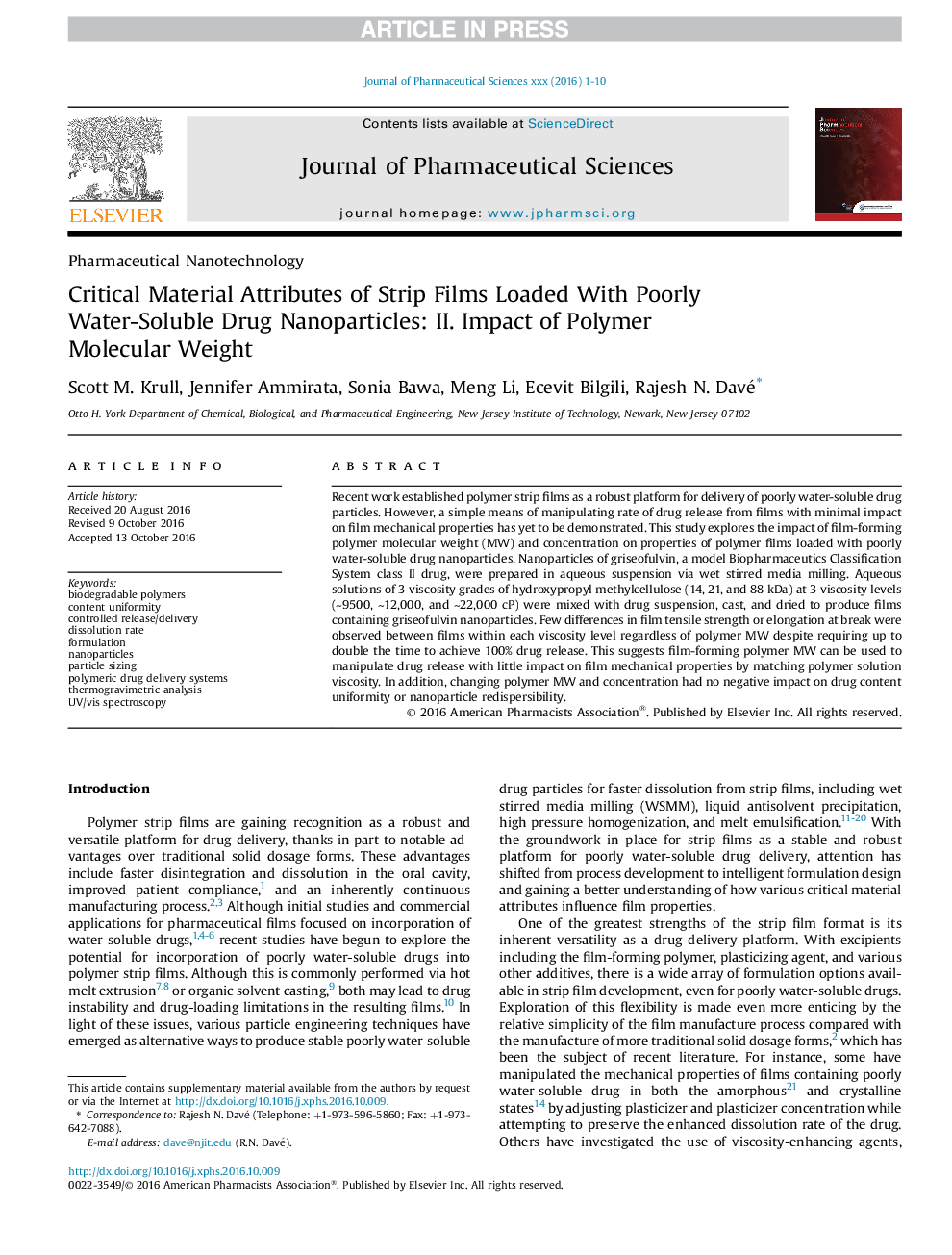| Article ID | Journal | Published Year | Pages | File Type |
|---|---|---|---|---|
| 8514478 | Journal of Pharmaceutical Sciences | 2017 | 10 Pages |
Abstract
Recent work established polymer strip films as a robust platform for delivery of poorly water-soluble drug particles. However, a simple means of manipulating rate of drug release from films with minimal impact on film mechanical properties has yet to be demonstrated. This study explores the impact of film-forming polymer molecular weight (MW) and concentration on properties of polymer films loaded with poorly water-soluble drug nanoparticles. Nanoparticles of griseofulvin, a model Biopharmaceutics Classification System class II drug, were prepared in aqueous suspension via wet stirred media milling. Aqueous solutions of 3 viscosity grades of hydroxypropyl methylcellulose (14, 21, and 88 kDa) at 3Â viscosity levels (â¼9500, â¼12,000, and â¼22,000 cP) were mixed with drug suspension, cast, and dried to produce films containing griseofulvin nanoparticles. Few differences in film tensile strength or elongation at break were observed between films within each viscosity level regardless of polymer MW despite requiring up to double the time to achieve 100% drug release. This suggests film-forming polymer MW can be used to manipulate drug release with little impact on film mechanical properties by matching polymer solution viscosity. In addition, changing polymer MW and concentration had no negative impact on drug content uniformity or nanoparticle redispersibility.
Keywords
Related Topics
Health Sciences
Pharmacology, Toxicology and Pharmaceutical Science
Drug Discovery
Authors
Scott M. Krull, Jennifer Ammirata, Sonia Bawa, Meng Li, Ecevit Bilgili, Rajesh N. Davé,
